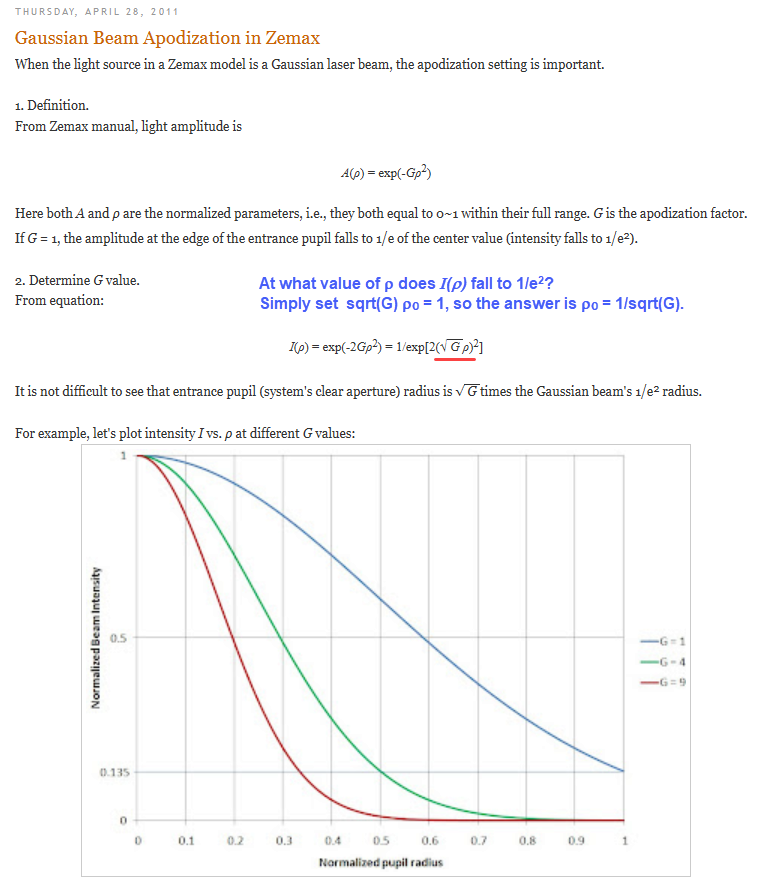Hi,
Can you please explain what Apodization Factor means?
Lets say my Entrance Pupil is 25 mm and Apodization Factor is 6.5, what is the beam size?
Thanks,
talimu
Hi,
Can you please explain what Apodization Factor means?
Lets say my Entrance Pupil is 25 mm and Apodization Factor is 6.5, what is the beam size?
Thanks,
talimu
Best answer by Jeff.Wilde
The Apodization Factor determines what the Gaussian beam’s intensity profile looks like across the aperture (or the entrance pupil of the system). More specifically, it determines how fast a Gaussian beam’s intensity falls off within the aperture. A simple way to think about it to ask the question: Where do I want the 1/e^2 intensity point of my beam to be relative to the edge of the aperture? For example, do I want the wings of the Gaussian to be cut off, or do I prefer to have the wings contained well within the boundary of the pupil? After some basic math (see below), the answer is rho_0 = 1/sqrt(G), where rho is the normalized radial pupil (aperture) coordinate, rho_0 is the specific value where the Gaussian intensity falls to 1/e^2, and G is the corresponding Apodization Factor.
So, if you have G = 6.5, then this means the 1/e^2 intensity point of your source will reside at rho_0 = 1/sqrt(6.5) = 0.39. This is a normalized radial coordinate value. With an EPD = 25 mm, the aperture radius is 12.5 mm. So, in absolute terms, the 1/e^2 intensity point of the beam within the pupil corresponds to (0.39)(12.5 mm) = 4.9 mm. If you define the “beam size” to be the *diameter* of the Gaussian beam as measured between the 1/e^2 intensity points, then the beam size is 2(4.9mm) = 9.8 mm. (However, I think it is best to use the terms “beam diameter” or “beam radius” when discussing Gaussian beams because “beam size” is somewhat ambiguous.)
Some more details can be found here: Gaussian Beam Apodization in Zemax

Enter your E-mail address. We'll send you an e-mail with instructions to reset your password.